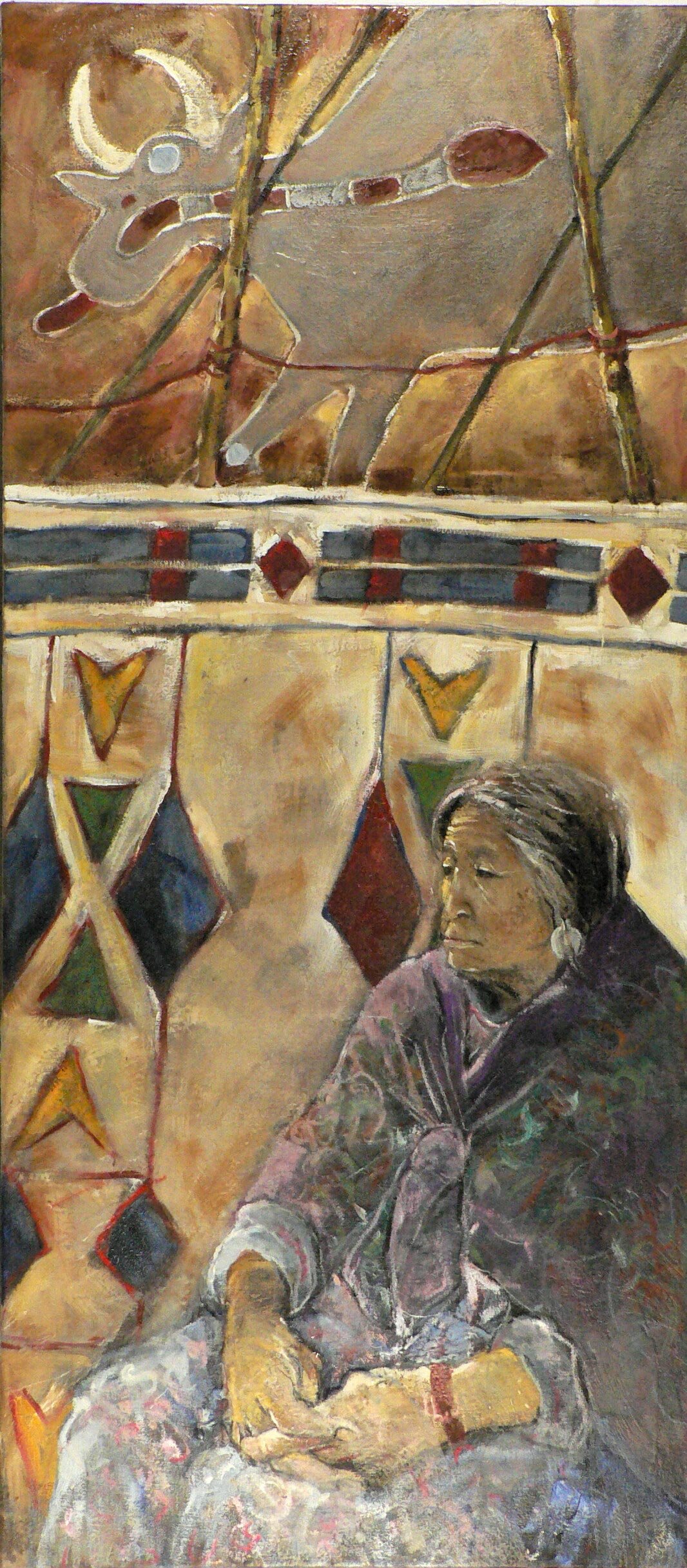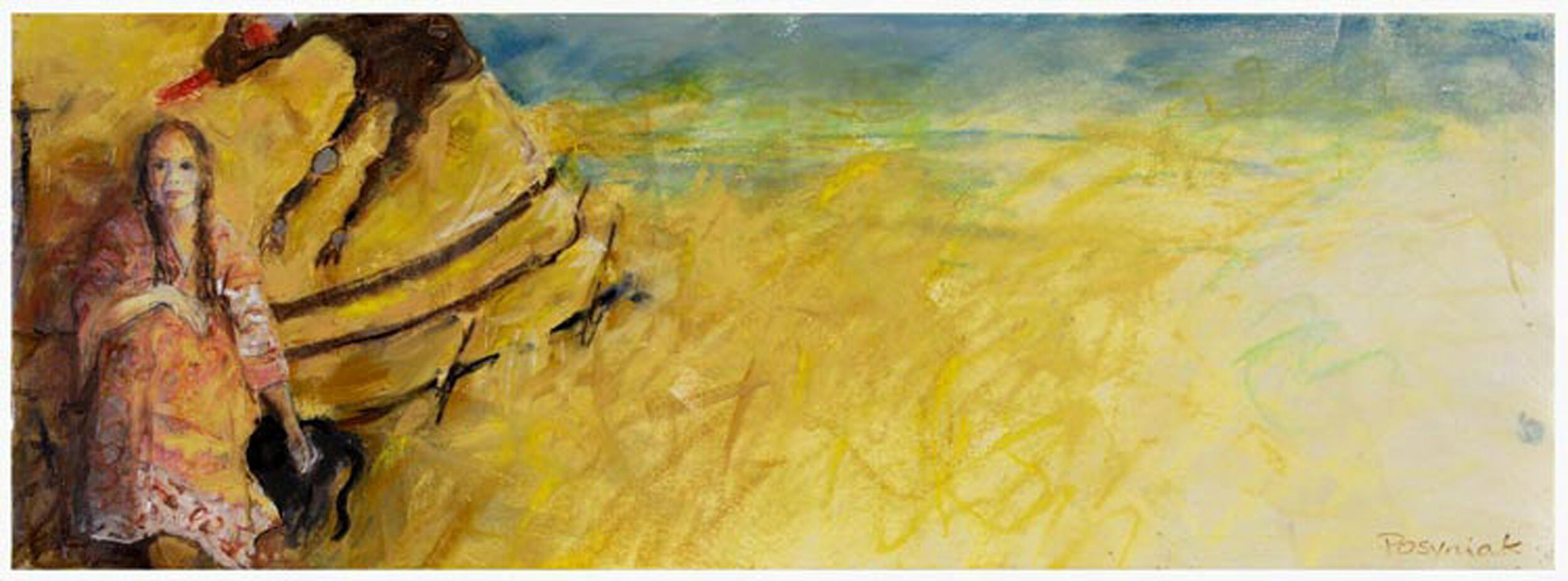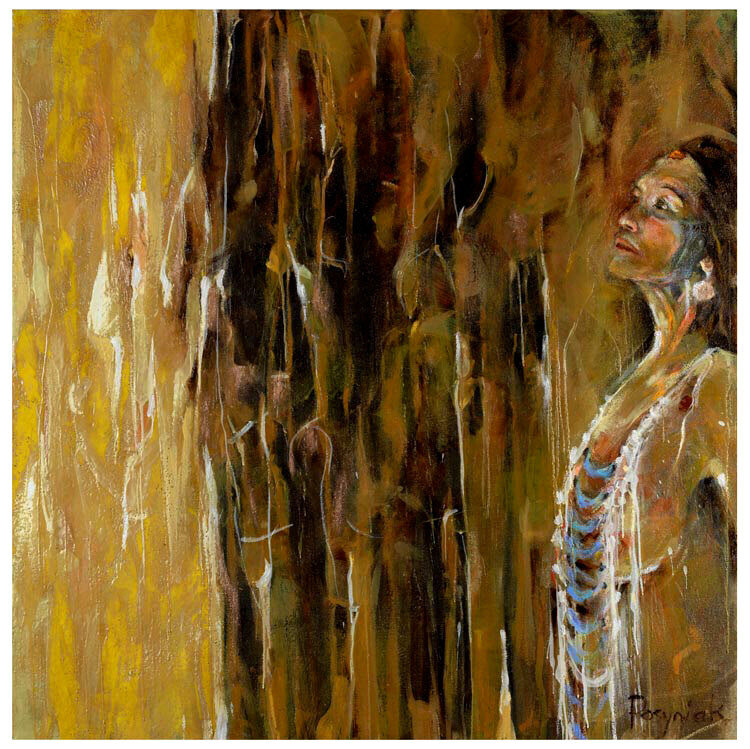Consensus: Blackfoot Women Elders
CONSENSUS: THE BLACKFOOT WOMEN ELDER SERIES
ABOUT CONSENSUS by Linda Many Guns
From my perspective, a Blackfoot perspective, consensus means truth. It is a synchronistic point in time when a group of people know the truth. We believe no man or woman can know the truth, not lawyers, not theorists, not judges. Only the Creator can know the real truth. We also believe all people are right and that it is our responsibility to bring all of the pieces of the truth into the circle. When that happens consensus occurs. This assemblage of ideas and thoughts is our truth, as we know it.
ARTIST STATEMENT by Teresa Posyniak
Through the themes of vulnerability and resilience in my figurative work, I explore the rich contours of human identity. Everything I create flows from a real experience or from a person. Over the years, certain individuals have captured my attention through their vision and strength in transcending difficult situations or challenges in their lives. My interest is the underlying motive that urges me to request their generous participation as subjects for my artwork. I use the term "generous" because this consent to be portrayed can involve months and even years of discussion and interaction. During these consensual processes, we often agonize over each detail in the painting to ensure that it truly reflects their experience in life and their perception of themselves, as well as my visual interpretations as the artist in the relationship.
In 2004, I attended a talk given by Linda Many Guns. Linda, a Blackfoot Elder, instructed her audience on the "listening circle", a traditional Blackfoot way to resolve conflicts and to discuss issues from various points of view. I was intrigued with Linda's vivid, passionate and articulate portrayal of her culture, and the lessons it could teach our society. I had a myriad of questions and Linda rewarded me with more stories, accounts of dreams, explanations, and exposure to beautiful aboriginal objects and clothing she has collected and made over time. A deep friendship grew, and at some point about two years ago, I asked Linda if she would let me paint a portrait of her.
This seemingly simple request generated hours and hours of discussions about how she wanted to be perceived, the role of her culture in these images, her relationship to the landscape and to the Blackfoot community and what being a Blackfoot woman meant to her. As a non-aboriginal woman, I was both fascinated and wary of my ability to interpret Linda's ideas into an actual work on paper or canvas.
And so, after a year of discussing possibilities and weighing options and approaches, I jumped in feet first, always with the idea that if Linda did not feel completely engaged with the images, and the manner in which I did them, that I would not go any further. To my amazement and pleasure, Linda responded with utter enthusiasm to the first three paintings, and expressed wholeheartedly how they genuinely resonated with her. The more work I did, the more she talked, told me stories, e-mailed me her dreams, and introduced me to other members from her traditional world, who, in turn asked me to work with them in the same manner.
With almost two dozen pieces to date, we are still developing ideas with the intent of including more individuals from the Blackfoot community. I look forward to the generation of more paintings and works on paper based on our consensual process.
STATEMENT by Linda Many Guns
The old people have said 'that people should know who you are when they see you'. These paintings and drawings hold layers of meaning. Those who know the symbols and what they represent will understand the paintings from that knowledge and for others, it is enough for them to know I am involved with the culture. These artworks have another purpose, that is, that in 2007, the Blackfoot culture is still practiced and central to the Blackfoot people's way of life.
This series is a deliberate interconnection of the talents and experiences of both painter and the subject. Each painting is the result of fusing two cultures, one Blackfoot, the other, western Canadian, through intensive periods of shared experiences, shared understanding and awareness, into these unique images.
Currently, as a doctoral student in Indigenous Studies at Trent University in Peterborough, these artworks will form part of my research as a visual representation of traditional knowledge. I believe our futures lie in being able to take the best from both worlds to mutually share and create new understandings that can benefit all people. The images are representative of what any of the public could witness at cultural events.
On a personal note, it has always been a unique and special event whenever Teri and I talk about Blackfoot culture. I share my feelings of being a Blackfoot woman and the myriad connections to this world, and she, of her thoughts on how to capture and translate these images onto canvas and paper. She has deepened and pressed our thoughts into wax and paint. Together we talk of color, knowing and being. The images she creates come from those many hours of discussion, creating a window into today's Blackfoot world. It is in this spirit that they have been created.
















